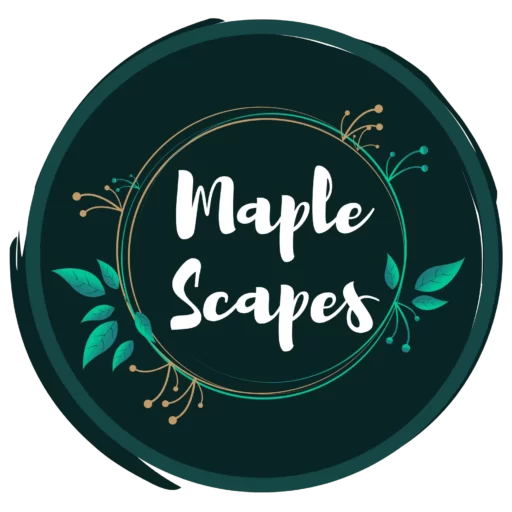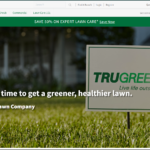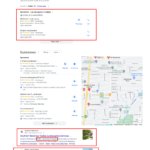This post explores landscape estimation basics and methods and provides free resources for estimating and pricing a landscaping job.
The method for landscaping estimation mentioned here should align with your business’s financial goals and help you meet customer expectations.
Other Post in the series
Things you need to know before estimating jobs
Know your Numbers
Ensure you comprehend the project’s numbers and expenses before estimating. It covers the price of the materials, the labor rate, and other costs. Precise estimations are based on precise financial information.
Estimates versus quotations
Whereas quotes are formal offers with specific details, estimates are rough calculations based on the currently available information. Comprehending this differentiation facilitates the management of client expectations and guarantees openness in your correspondence.
Measurements
The foundation of any estimation is an accurate measurement. Take your time and accurately measure square footage for landscaping or building dimensions. Use cutting-edge instruments and technology to improve precision and expedite the estimation procedure.
i) Square Footage
A key metric in many industries is square footage. Learn how to compute the square footage of areas, surfaces, or projects. This skill is required to accurately estimate material requirements, costs, and project timelines.
ii) Face Footage and Linear Feet
Comprehending face footage and linear feet is essential, depending on the project. While linear feet are frequently used in fencing or construction, face footage is essential in siding and wall coverings. Adjust your projections based on the precise measurements that apply to the project.
Pricing
Create a transparent pricing plan. Recognize market rates, account for overhead, and add a healthy profit margin. Whether you choose a service-based or standard pricing model, make sure your charges reflect the value you offer.
Standard (by the job) vs Service based (hourly) estimates
Understand the distinction between service-based and standard estimations. While service-based estimates consider each project’s needs, standard estimates adhere to predetermined standards. Adapt your strategy to the project’s specifics, providing flexibility and customization as needed.
Formula to estimate landscaping jobs
The formula provided here is a fundamental tool for estimating landscaping projects.
Let’s examine each part in turn:
Costs + overhead + markup = estimate
Costs: This includes all direct costs related to the landscaping project, including supplies, labour, machinery, and any other expenses directly related to the work.
Overhead: This category includes indirect costs necessary to operate your landscaping business but not directly related to a specific project. Rent, utilities, insurance, and salary for non-project-specific employees may be included in this.
Markup: The percentage added to the total cost and overhead to arrive at the project’s final price or bid. It considers your profit margin and ensures you’re paying your direct expenses, positively impacting your company’s long-term viability and expansion.
With this formula, you can get an estimate that allows for a profit margin and covers your overhead and direct costs.
Establishing a markup percentage that aligns with industry norms, your company’s objectives, and the level of competition is essential.
Maintaining the accuracy and reflection of your company’s financial health of your estimates requires routinely analyzing and modifying your markup.
Digging deeper into the estimation methods and formula
Costing Activities and direct expenses
Excavation
- Assess the amount of excavation that is necessary.
- Determine how much soil needs to be removed.
- For excavation, take labor and equipment costs into account.
Base preparation
- Determine the kind and quantity of materials required for the base.
- Add the price of sand, gravel, or other building supplies.
- Take into account the labor and equipment needed to prepare the base.
Product costs
Plants
- Determine the kinds and numbers of plants required. Consider nursery or wholesale prices. Add planting labor and any possible warranty expenses.
Pavers
- Calculate the area that needs to be paved in square footage. Determine the price per square foot of pavers. Add labor to the installation cost.
Mulch
- Calculate the amount of mulch needed. Examine prices for bulk purchases. Consider labour when spreading mulch.
Soil
- Determine the kind and quantity of soil required. Add the soil’s cost per cubic yard. Consider labour to spread the soil.
Other material costs
- Ascertain the type and amount of soil needed. Add the cost per cubic yard of soil. Imagine working hard to distribute soil.
Delivery cost of materials
- Determine how much it will cost to transport the materials to the location.
- Add the cost of fuel, car upkeep, and driver compensation.
Equipment rentals
- Determine whether any specialized tools are required for the project.
- Add the cost of renting the necessary equipment for the entire duration.
Subcontractors
- Include the cost of any specialist subcontractors needed for particular tasks (such as tree removal).
Fuel/Transportation
- Calculate the fuel expenses for vehicles and equipment. Take any car maintenance costs into consideration.
Labour & product rates
- Establish labor hourly rates—set prices for various categories of goods and services. Make sure to budget for overtime and other labor expenses.
Estimate=Excavation + Base Preparation + Product Costs + Delivery Cost + Equipment Rentals + Subcontractors + Fuel/Transportation (Labour Rates×Project Duration)
This method of dissecting the costing activities and direct expenses will enable you to create a thorough and precise estimate for your landscaping project.
This thorough approach guarantees that every possible expense is considered, resulting in a more competitive and dependable estimate.
Costing overheads
Equipment overhead cost
- Evaluate the project-related equipment’s depreciation.
- Include the cost of equipment upkeep and repairs.
- Take equipment storage expenses into account during off-seasons.
- Determine the cost of equipment coverage insurance.
- Add any taxes or license costs related to the use of the equipment.
Adding markup
- The markup is a percentage added to the total costs, including direct costs and overheads, to calculate the final price or bid for the project.
- It takes into consideration revenue as well as the general well-being and sustainability of your landscaping company.
What you need to know after your estimation
Your breakeven cost – so you do not get less during negotiation
It’s critical to comprehend your breakeven cost following estimation. This amount is the bare minimum you’ll need to pay for everything and stay out of trouble.
During negotiations, it is essential to know your breakeven point because it gives you a starting point below which you should be wary of accepting offers.
With this knowledge, you can confidently negotiate and ensure your business stays profitable.
BATNA– Best Alternative To a Negotiated Agreement
A key idea in negotiations is BATNA. It is best if discussions fail to produce a mutually agreeable solution. Making decisions requires understanding your best alternative.
A solid BATNA lets you turn down a potential contract or deal if it doesn’t fit your breakeven or profitability criteria without jeopardizing your company’s success.
Market vs Cost-Based Pricing
It’s crucial to comprehend how to balance cost- and market-based pricing.
Market-based pricing considers what the market is willing to pay, whereas cost-based pricing guarantees that you make a profit and cover your costs.
For competitiveness, finding a balance between these strategies is essential.
Analyze market trends regularly and modify your pricing plan to stay profitable and competitive.
Line Item Pricing vs Lump Sum Pricing
Depending on the nature of the project and the client’s expectations, you can select between lump sum and line item pricing.
For transparency’s sake, line item pricing breaks down costs so clients can appreciate each component’s worth.
Lump sum pricing streamlines the negotiating process by offering a single total.
Adapt your strategy to the client’s needs, the project’s scope, and industry standards.
Free resources
Landscaping cost estimate templates
These resources are available on the internet and are compiled from several sources.
- Landscaping cost estimate template from Surrey govt website (Govt of Canada)
- Editable PDF template from Jobber.
- Excel landscape estimation template from Monday.
- Detailed cost estimate for landscaping work (you can edit and reuse this format for your clients)
- Estimate sample from World Estimating
Material calculators online
Online material calculators can be handy for expediting material calculations for landscaping projects. Here are a few references:
- landscape stone calculator, limestone screening calculator or a road base material calculator
- Basalt Column Weight Estimator & Basalt Sawn Slab Square Foot Calculator
- Measure lawn size online
Videos, Courses and Articles to get you started
- Free Live training sessions from Go LMN
- How to Estimate the Cost of Landscape Planting and Irrigation for a Typical University Campus – Technical paper. Gives you a good sample of a takeoff and estimation process.
- Landscape architects benefit from providing detailed cost estimates to their clients – Technical research paper (Thesis). It might feel overwhelming to read at first, but it gives you a competitive edge.
- On-screen take-off training from the center
Conclusion
Using free resources like line item and lump sum pricing templates and online material calculators can significantly improve the precision and efficiency of your landscaping project estimates.
These resources help you save time while improving the accuracy and expertise of your cost estimates.
Enjoy estimating jobs that give you steady profits!









